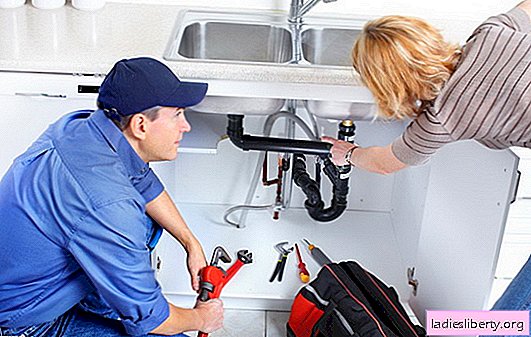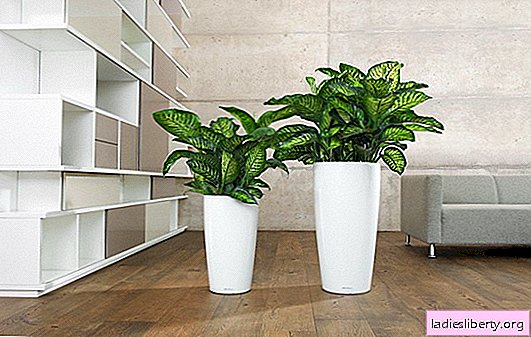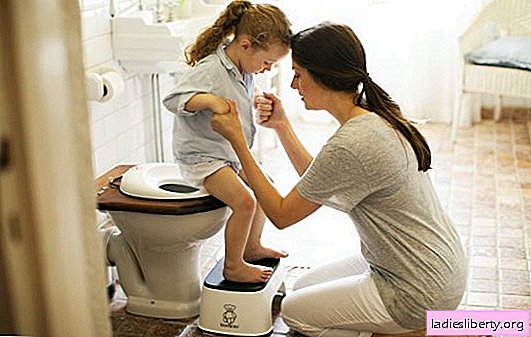
Sooner or later, every landlord faces pipe clogging in an apartment, and in most cases you can do without the help of a professional plumber.
The need to clean the sewage is indicated by a decrease in the speed of water leaving the drain, the presence of an unpleasant odor from the sink or bathtub.
Pipe blockage: causes
In houses of the old construction, there are still cast-iron sewer pipes. Such material is susceptible to corrosion, the internal walls become uneven over time, and a rust coating forms on them. Most often, blockage occurs in such potentially dangerous places: the interval from the release of the kitchen sink to the release in the bathroom.
If the apartment has plastic pipes, the cause of the blockage may be improper installation, that is, non-compliance with the slope of the pipe towards the riser. This leads to plaque formation inside the pipes. One of the most common causes of clogging in pipes is fat. Over time, it settles on the inner surface of the pipes, retains small debris, food debris, etc., such sediment gradually compacts and reduces the throughput of the pipe.
The cause of clogging of pipes may be due to improper installation, non-compliance with the slope of the pipe. A foreign object can get into the system, as a result of prolonged use, a thick coating forms on the inner walls of the pipes. Pipes also become clogged if improperly or improperly maintained.
There are several ways, at home, to clean the clog in the pipes using folk remedies, chemicals and mechanical devices. If the water through the drain hole began to leave slowly, an unpleasant odor appeared in the kitchen or bathroom, a rise in water under the drain grates of the sewer drain is noticeable when the pressure is turned on, you need to eliminate the blockage.
Most often, pipes are clogged in the summer-autumn period, which is associated with much greater water consumption and an increase in the amount of garbage entering the sewer. Particular attention should be paid to the period when harvesting for the winter is carried out and it is advisable to have at hand what pipes can be cleaned.
How to clean a blockage in pipes at home: the necessary tools and devices
Understanding how to clean the obstruction in the pipes at home, we list the methods and devices that can be used for this:
1. Mechanical methods.
The easiest option is to use a conventional plunger. This tool is, practically, in everyone’s house and it can easily cope with a simple blockage, for example, if the sink is clogged with small particles of dirt, garbage and grease.
More complex blockages will have to be cleaned in a different way. In this case, a plumbing cable of about three meters in length with a spike at the end is used. However, remember that the cable is not suitable for chrome, brass and plastic siphons.
You can also use a brush or wire to clean the pipes.
2. Chemical methods.
How to clean the clogging in the pipes with chemicals at home? Buy a product in the store, read the instructions for use on the label and follow it. As a rule, the liquid is poured into the sink, kept for half an hour and washed off with plenty of hot water. It can be gels, liquids, alkalis, acids or powders (Mole, Mr. Muscle, Tyreth, Silite). In the composition of these funds is sodium hydroxide.
The principle of action of chemicals is to "corrode" deposits on the inner walls of pipes. The use of these products is completely safe for plastic and cast-iron sewer systems.
Use chemicals with caution: wear rubber gloves on your hands, it is advisable to cover your face with a mask so as not to get a mucous burn when chemicals evaporate.
It is recommended to use chemicals for pipe cleaning at least once every 2-3 months, then it will be possible to avoid expensive replacement of the sewer system for a long time.
How to clean the obstruction in the pipes at home: in the bathroom
How at home to clear a blockage in the pipes in the bathroom with a plunger? The bathroom, unlike the sink, is equipped with a safety drain hole. It must be closed before cleaning. With the help of a plunger, a hydraulic shock is formed, which displaces the accumulation of dirt down the pipe from a narrow drainage place, where blockage most often forms. First you need to draw water into the bathtub to cover a cup of plunger. Install the plunger over the drain hole, press it firmly to the hole and press the handle sharply 3-4 times and sharply remove the plunger from the water. Repeat as necessary until water begins to flow freely.
You can clean the bath with a ruff, for which it is introduced into the sewer hole and with sharp movements they break through the resulting blockage. If necessary, you can attach the ruff to a flexible rod to extend the structure and remove the blockage at great depths.
If a plumbing cable is used for cleaning, a siphon is turned out and the cable is inserted into the drain hole as deep as possible. At the same time, it is rotated in both directions. Screwing into the pipe, the cable clears all the blockages, the garbage moves along the drain and is washed out. At the end of cleaning, all elements of the drain channel are washed and a siphon is cleaned.
If you don’t have a wire or cable on hand, you can take an electric drill or screwdriver, which will also effectively help to cope with blockage.
Now we will consider how to clean the obstruction in pipes at home using folk methods safely and effectively. Soda is great for this purpose. This is the cheapest and easiest way that any housewife can use without waiting for the help of a plumber.
In equal proportions, you need to take soda and vinegar, for example, one glass each. Soda is poured into the drain hole and then vinegar is poured on top. The hole is closed with a stopper and left in this state for 2-3 hours, after which the pipe is washed with hot water. This method of cleaning the blockage is completely safe for pipes. It can be used not only to eliminate the existing blockage, but also for prevention.
Consider a few more solutions made from soda, which will help get rid of blockage. To do this, take about 150 g of soda and bake it in a cast-iron skillet for about 15 minutes. After it has completely cooled, dilute it with a glass of water and mix thoroughly. Such a composition can be compared in terms of effectiveness with the well-known store-based chemical agent “Mole”.
Another safe way to clean your sewer is to use a regular lemon. To do this, take a few lemons and squeeze them directly into the drain hole. To sustain, without opening water, not less than an hour. If there are no lemons, you can take half a cup of lemon juice concentrate. This method is also quite effective.
If a clog from a fat plug forms in the sink, you can prepare a strong salt solution. It is poured directly into the drain hole and they begin to clean the drain with a plunger. To ensure a better fit of the plunger, its edges can be greased with an inexpensive cream.
A simple blockage in the sewer can be eliminated with a powerful vacuum cleaner using its blowing function.
How to clean the clog in the pipes at home: in the kitchen
Let's talk about how to clean the blockage in the pipes in the kitchen at home. First you need to understand how the siphon is arranged in the sink, since in many cases you can limit yourself to just cleaning it.
The most common are bottle siphons, the diameter of which is 32 or 40 mm. The smaller the diameter of the drain hole, the faster it becomes clogged. The siphon design provides for a removable part resembling a bottle bottom. Eliminate the blockage in the sink with such a siphon is not difficult. Special devices to unscrew the removable part are not needed.
So, we unscrew and remove the sump, previously substituting a bowl or bucket under it so that the rest of the water does not spill onto the floor. Next, using a wire with a hook at the end, we clean the siphon.
Other types of siphons can also be used in sinks. Pipe - made in the form of a curved tube. Quite often there are corrugated siphons, which are easy to bend and can be installed in non-standard conditions. Overflow siphons are installed in sinks with a special hole to drain excess water. If you are connecting a dishwasher or washing machine, double or triple siphons are used. There are hidden siphons that are installed in a box.
To prevent clogging of the sink, you can put a plastic mesh on the drain hole. You can install a garbage grinder that grinds all the waste that got into the sink, and then small garbage is washed off into the sewer. A garbage grinder eliminates the need to often clean the pipes, it easily copes not only with soft waste, but grinds even bones, works silently. It does not take up much space, does not need special care, ordinary washing with cold water is enough.
How to clean the obstruction in the pipes at home and not ruin them
It should be borne in mind that using chemicals to clean the blockage can cause damage to plumbing equipment, aluminum pipes and sinks. The fact is that some chemical reactions proceed with the release of a large amount of heat. It is not recommended to bend over the sink and look into the drain hole if a gurgle is clearly audible. This indicates a reaction and can be dangerous.
It is important to remember that the choice of chemicals for cleaning the sewer should be based on the material of the water supply and the type of pollution. In most cases, the universal remedy "Mole" is suitable, coping with various types of pollution.
The use of a plumbing cable is suitable for cleaning metal pipes, since it helps to effectively remove, including rust, from the pipe walls. Plastic pipes can be damaged as a result of increased mechanical stress. They must be cleaned with extreme care. By itself, this material is not susceptible to corrosion, and dirt sticks poorly to its surface. But over time, the fat gradually clogs the drains and when it becomes necessary to eliminate the blockage, it is best to use chemicals or a plunger.











